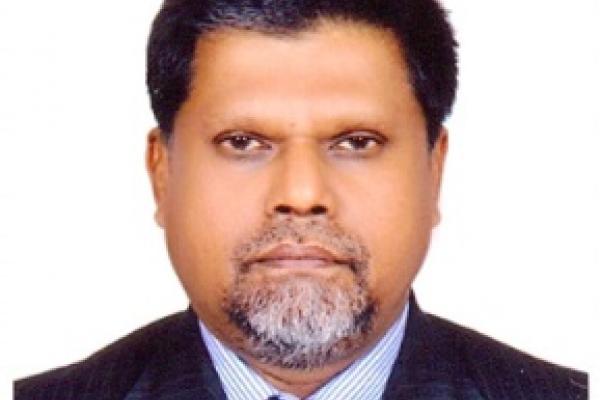
October 7, 2015
All Day
Scott Lab E100 201 West 19th Avenue Columbus, Ohio 43210
M. Monowar Hossain started his career as Lecturer of Bangladesh University of Engineering & Technology (BUET). He obtained PhD in Civil Engineering from Strathclyde University, Glasgow in 1985 and became professor of BUET in 1992. He held a number of significant positions while working at BUET, such as Head of the Department of Water Resources Engineering, Dean Faculty of Civil Engineering, Director of Students’ Welfare, Director of Physical Education etc. He also worked as BUET Syndicate member, Governing Council member of IWFM, ARI etc.
Hossain has worked in many high level Government Committees including the committee headed by the Prime Minister of Bangladesh. Hossain conducted a number Research Projects on Water Resources problems of Bangladesh and has about 140 technical publications to his credit. Prof. Hossain attended a number of International Conference to present his research findings. Hossain is a recipient of Commonwealth Fellowship and a number of other scholarship and awards. He is a life Fellow of Institution of Engineers, Bangladesh and member of a number of professional bodies at home and abroad. Currently he is working as the Executive Director of Institute of Water Modeling (IWM).
Abstract
Bangladesh is a disaster-prone country having an area of 1,47,570 sq km with a population of about 160 million that makes it the most densely populated country of the world. The country is located at the lowermost part of the basins of the three Himalayan Rivers: the Ganges, the Brahmaputra and the Meghna (GBM). The combined basins (watersheds) of these three rivers are about 1.75 million sq km of which only 7.5% lie in Bangladesh. Around 90% of the runoff is generated outside Bangladesh during a 5 months rainy season from June to October while for the remaining 7 months there is almost no rainfall. Huge runoff in a short time associated with huge sediment loads cause flood risk management more complicated. In normal flood about 20% of the country is flooded while in extreme cases about 70% area is flooded which has significant negative impacts on national economy.
Water management in Bangladesh is very challenging due to too much of water in monsoon and too little during the dry season. Coastal cyclones and cyclone induced flooding in coastal areas is an added problem. With a projected sea level rise by about 80 cm in 2100 will make future water management even more complex and challenging. It may be noted that Bangladesh has a 710 km long coastline and a coastal area is about 30% of the country’s total area and home of 28% of total population. The total water volume and sediment loads are delivered through the coastal area to the Bay of Bengal. This has severe impacts on the water management of the country.
Both structural and non-structural measures are adopted for addressing flood risk in Bangladesh. Flood forecasting and warning is the most fruitful non-structural measures to mitigate negative impacts. To make the flood forecasts with long lead time using latest technologies flow data from upstream basins are prerequisite. As the GBM basins (watersheds) are shared by different countries of the region, thus regional co-operation and joint research is an essential prerequisite for understanding an reduction in flood vulnerability by providing timely and reliable warning to save people's lives and property in the downstream Bangladesh.
This event is part of the Mershon Center for International Security Studies, Seminar Series. Hydropolitics: Water Scarcity and Water Security, Organized by Esther E. Gottlieb and Bryan G. Mark
Co-‐Sponsors: Global Water Initiative; Division of Geodetic Science, School of Earth Sciences; & the Middle East Studies Center
